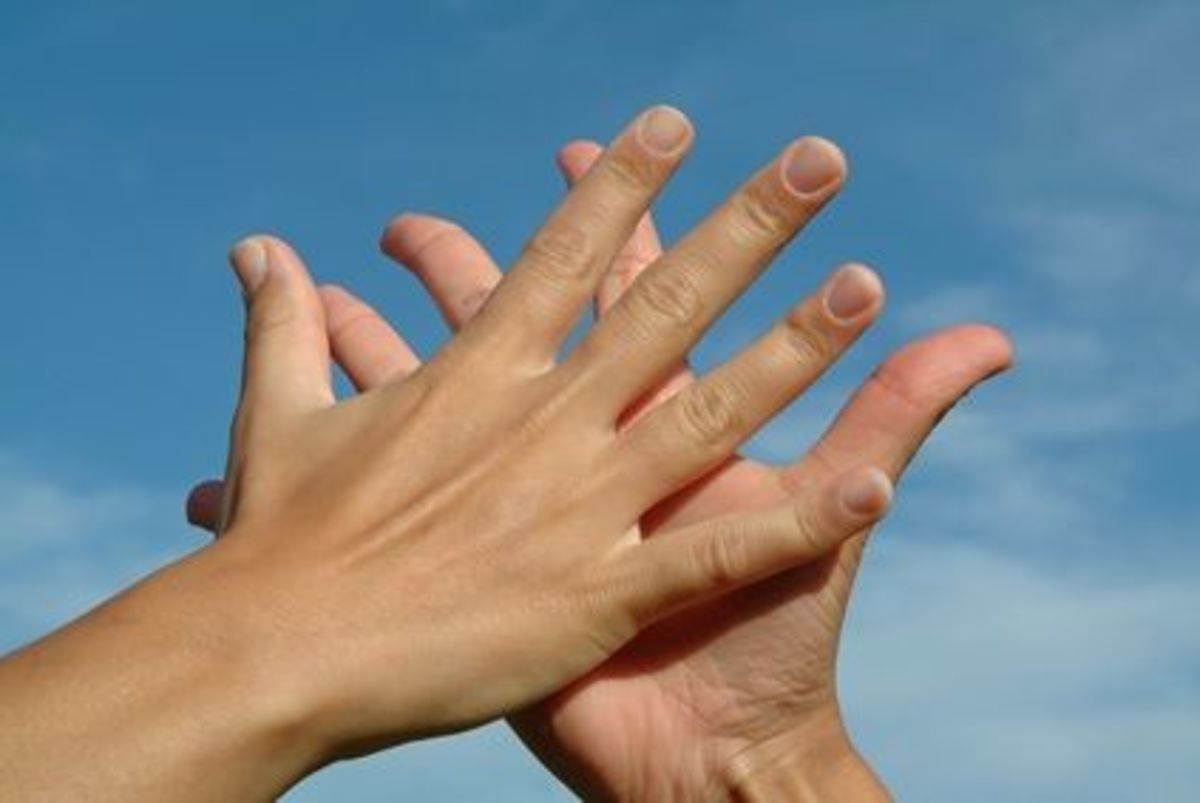Learning Baby Care
A newborn baby may seem very delicate, but there is nothing to worry about for as long as you learn baby care. At all times, be gentle and reassuring.
Picking a baby
Always take care to support his head.
1. With your right hand, gently, but firmly, take hold of his feet.
2. Bend over and raise the baby's feet just enough so that you can slide your left hand under his bottom and up his spine to the back of his neck.
3. Spread your fingers to support the baby's head and turn your arm so that your left wrist and forearm support his back. Spread your right hand under his bottom and lift slowly, supporting him with your arms.
Holding a baby
Hold the baby the way that is most comfortable for you.
Held to your shoulder - Supporting the baby carefully, lift him to your shoulder. Support his bottom with your right hand and his head with your left. Be careful not to let his head loll back, and make sure that he can see over your shoulder if he wishes.
Cradled in your arms - As you lift the baby, turn him so that his head is supported by the crook of your left elbow and your right hand is under his bottom. This position makes it possible for the baby to look at you while you are holding him.
Left arm free - Support the baby's spine and head with your right hand and arm so that he is held over your right hip, face up, under your arm. It is always safest to hold the baby with your strongest arm.
Bathing a baby
Bath the baby in a warm room. Wash your hands, then collect everything you need where you can reach it easily as you bath the baby. Have ready clean cotton wool, baby soap or a proprietary cleansing solution, a large towel or towelling apron to put on your knee and another towel to wrap the baby in, a clean nappy, any cream you use, and a baby bath. Put about 3 inches (75 mm) of water in the bath, pouring cold water in first - especially if the bath is a metal one — and then hot. Test the temperature with your elbow or the inside of your wrist. The water should feel neither hot nor cold. If you are using a solution, add it to the water following the manufacturer's instructions. Lift the baby on to your knee. Undress him, leaving his nappy on, and wrap him in a towel.
Before you put the baby in the bath, hold him under your left arm and wash his face with cotton wool and warm water from the bath. Use separate swabs for each side of his face and his ears and neck. Use more cotton wool to dry his face. Soap his head and rinse it, or wash it with solution from the bath. Pat his head dry with a towel. Take off his nappy, then wash his bottom carefully with cotton wool and soap, or cotton wool dipped in the solution. Wipe from front to back. Soap the baby's chest, arms and legs quickly so that he does not get cold. When the baby is older he can be soaped in the bath. If you are using solution you do not need to soap him. Dry your hands.
2. To put the baby in the bath, hold his left arm with your left hand and support his head with your left forearm. Hold his legs with your right hand — put a finger between his ankles to stop them from rubbing together. Lower him into the water, talking gently to him. Do not remove your right hand until he is used to the feel of the water, especially if this is his first bath.
3. Do not let go of the baby while he is in the bath. He cannot support himself and might slip underwater. To rinse his front: continue to support him with your left arm and hand and wash him with your right hand. This way there is no danger of his slipping.
4. To rinse the baby's back: change hands and hold his left arm with your right hand so that he is leaning on to your wrist. Do not leave him in the water longer than is necessary to see that he is properly rinsed, or he will get cold.
5. Lift the baby out of the bath, holding him as you did when putting him in. He is wet and slippery so take care. Wrap him in a dry towel.
6. Pat dry the baby's bottom, paying special attention to the creases. Apply petroleum jelly, zinc and castor oil or lotion. Put on his nappy.
7. Dry the baby's back and front and dress him in clean clothes. It is not necessary to use baby powder. Do not sit him on a damp towel.
Bottle-feeding
Sit on a low chair with your feet on the floor. Make sure your back is well supported, use a pillow if necessary. Cradle the baby in your arms so that his mouth is higher than his stomach and you can comfortably hold the bottle to his mouth. Hold the baby close to you. Do not give him the bottle propped up so that he can feed himself. He might choke, and he will be deprived of the comfort that a breast-fed baby gets from being cuddled by his mother.
1. Cold milk does not harm a baby and is safer than milk which is too warm, but the baby will prefer it at body temperature. Put the bottle of milk in a jug of water and leave it for five minutes. Test the temperature on your forearm. The milk should feel neither hot nor cold.
2. Touch the baby's cheek with one finger of the hand that is holding the bottle to let him know that it is near. He will turn towards the bottle pursing his lips. As he turns he will take the teat in his mouth and start sucking. Let him drink as much milk as he wants, he is the best judge of his needs. Do not worry if he fails to finish a bottle sometimes. So long as he seems content and is gaining weight normally there is nothing to be concerned about.
3. Hold the bottle firmly and keep it tilted so that the teat is always full of milk. This reduces the chance of too much air getting into the baby's stomach. A bottle-fed baby usually takes in too much air anyway, and you should stop once or twice during the feed to burp him. If the baby stops sucking early in the feed this is probably what is wrong.
Important note: Most babies are better off being breast-fed than bottle-fed. Breast milk provides more balanced nourishment for the baby and greater protection of his health.
Dressing a baby
Lay the baby on a changing mat on the floor, in a cot, or hold him on your knee. Do not dress him on a table or bed where he might roll off on to the floor.
1. Stretch the neck of the baby's vest wide open and carefully ease it over his head. Take care not to catch his nose or ears or jerk his head.
2. Hold one wrist of the vest open with your thumb and forefinger and ease the sleeve over the baby's fingers. Do the same with the other sleeve.
3. Pull down the vest. If you have difficulty putting a vest on a very small baby, you may find it easier to use a wrap-over vest, but make sure that any ties or buttons are securely sewn on.
Immunizations
It is very necessary on for babies to undergo the different immunizations needed. These may include:
1. BCG (one month) - protection against tuberculosis
2. DPT (two months) - protection against diptheria, pertusis, tetanus
3. Poliovirus Vaccine (3 months) - taken orally against polio
4. Measles Vaccine (6 months) - against measles
5. Hepatitis Vaccine - against hepatitis





